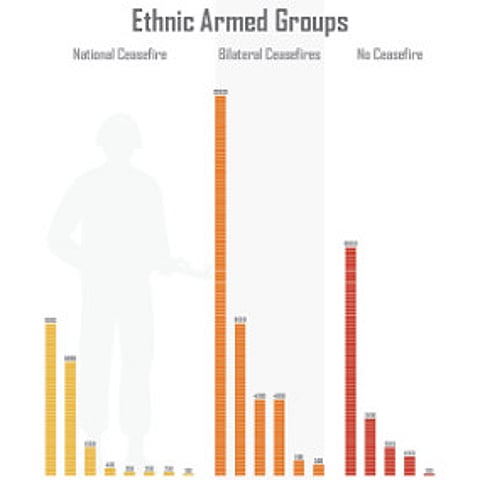(This article is part of our special package on Myanmar. Read more articles here.)
The first night she heard the gun shots, Mar Lar (not her real name) was not afraid, the popping of guns sounded like it was coming from far away. Two days later, the sounds drew nearer and gunfire became more frequent. After the military burned down nearby sugarcane fields to drive out 'enemy' fighters, leaving the house became too dangerous and the fighting was so intense that sleeping had become impossible.
"We stayed after most people had left because we thought it would be over soon," said Mar Lar. But the conflict continued and after days of hiding in silence for fear of being found, Mar Lar and her family decided to leave the bullet-ridden town of Laukkai, the capital of the Kokang Special Region in the northeastern Shan State, near the Myanmar-China border. Fighting intensified as Myanmar's armed forces launched airstrikes against the Kokang, an ethnic Chinese minority, in February 2015. This was in response to the renewed offensive by the Myanmar National Democratic Alliance Army (Kokang Army), which had been ousted from the area by the government forces, the Tatmadaw, in 2009. Little did Mar Lar know that she had fled from a conflict that military analysts of the security risk advisory group IHS Jane would later call "the largest war since Myanmar's independence".

